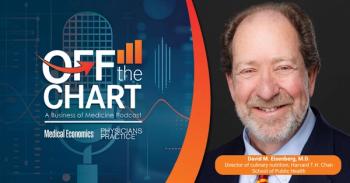
Patient Concerns Are as Important as Symptoms
In order to provide comprehensive care, physicians need the ability to pick up on a patients concerns, not just their symptoms.
I love a good mystery – looking for clues and trying to guess whodunit. Fortunately, my medical practice affords me the opportunity to be a detective on a daily basis. There's the intrinsic puzzle of historical facts and physical exam findings that help you narrow in on the suspected diagnosis. That's what they teach you in medical school and what you are tested on during your board exams. It is, no doubt, an intellectual riddle that makes medicine so fascinating. However, there is another type of detective work that I was less well-prepared for but which is no less challenging and fascinating.
Patients come in and present set of symptoms and a list of concerns. The two are not necessarily linked, but failing to pay attention to either one will jeopardize the success of your interaction. Symptoms are what we are trained to elicit from history and signs are what we look for on a physical exam.
A patient comes in for a cough and reports a fever and runny nose as well. During the exam, we hear crackles in the left lung base. A chest X-ray confirms our suspicion – pneumonia. Often, it is this straightforward, particularly in an age in which physicians enjoy so many diagnostic tests available at our fingertips. However, there is also the patient's concerns which may or may not be the same as their symptoms.
Two patients I saw recently illustrated this conundrum. Both were middle-aged women who presented for an acute illness – one with upper respiratory symptoms and the second with back pain. As these are very common illnesses, I have a set list of questions and diagnostic approaches based on the patient's answers. I generally don't do an EKG for Upper Respiratory Infection (URI) symptoms, nor do I order a chest X-ray for low back pain. While the symptoms these patients had didn't lend themselves to these diagnostic tests, their concerns did.
One patient had witnessed atypical presentations of acute myocardial infarct in both parents. As a result, flu-like symptoms, which was the presentation for one of her parents, made her concerned about the possibility of her URI symptoms masking an underlying heart attack. After educating her on her risk factors (which were low) and the signs and symptoms of a heart attack (of which she had none), I performed the EKG. I did not suspect that she had a heart attack, but an objective test, as imperfect as a single EKG is for diagnosis, provided therapeutic benefit to the patient.
Ultimately, my job is to do what is in my power to cure if possible, while always demonstrating care and empathy for each patient. If I had failed to pick up on the clues she dropped as she gave me her history, I would've made the same diagnosis and treatment recommendations but failed in a fundamental way to address her concern.
Likewise, my patient with back pain reported intermittent, atypical chest pain. Her clues about her true concern laid in the frequent references she made to being a former smoker. It does not take Sherlock Holmes to determine that she was concerned about lung cancer as a cause for her chest pain. While her symptoms had since resolved and she had a normal exam, I still performed a chest X-ray and EKG, which were both medically reasonable. Failing to address her concern about her pulmonary health would have failed to provide her with comprehensive care.
Reassuring patients about their concerns doesn't always require diagnostic testing, particularly that which is invasive, expensive, or which carries risk. When diagnostic testing is done without solid medical rationale, it is imperative that patients understand that any type of testing can lead to the need for additional testing.
Sometimes, reassurance is picking up on what the patient is concerned he or she has and addressing it directly using a clear explanation based on objective findings. An example would be explaining to a patient with leg bruising after a fall why I didn't think he had a blood clot – the concern that had kept him up all night before our visit – without having to do additional testing.
Medical education is about ferreting out the facts and putting them together whereas medical practice is often about interviewing the witnesses in order to arrange the facts in the correct context.
Newsletter
Optimize your practice with the Physicians Practice newsletter, offering management pearls, leadership tips, and business strategies tailored for practice administrators and physicians of any specialty.








